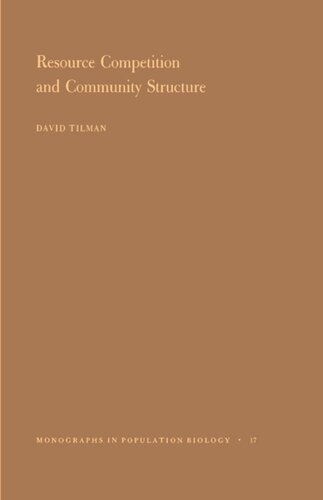

Most ebook files are in PDF format, so you can easily read them using various software such as Foxit Reader or directly on the Google Chrome browser.
Some ebook files are released by publishers in other formats such as .awz, .mobi, .epub, .fb2, etc. You may need to install specific software to read these formats on mobile/PC, such as Calibre.
Please read the tutorial at this link: https://ebookbell.com/faq
We offer FREE conversion to the popular formats you request; however, this may take some time. Therefore, right after payment, please email us, and we will try to provide the service as quickly as possible.
For some exceptional file formats or broken links (if any), please refrain from opening any disputes. Instead, email us first, and we will try to assist within a maximum of 6 hours.
EbookBell Team

5.0
110 reviewsOne of the central questions of ecology is why there are so many different kinds of plants and animals. Here David Tilman presents a theory of how organisms compete for resources and the way their competition promotes diversity. Developing Hutchinson's suggestion that the main cause of diversity is the feeding relations of species, this book builds a mechanistic, resource-based explanation of the structure and functioning of ecological communities. In a detailed analysis of the Park Grass Experiments at the Rothamsted Experimental Station in England, the author demonstrates that the dramatic results of these 120 years of experimentation are consistent with his theory, as are observations in many other natural communities.
The consumer-resource approach of this book is applicable to both animal and plant communities, but the majority of Professor Tilman's discussion concentrates on the structure of plant communities. All theoretical arguments are developed graphically, and formal mathematics is kept to a minimum. The final chapters of the book provide some testable speculations about resources and animal communities and explore such problems as the evolution of "super species," the differences between plant and animal community diversity patterns, and the cause of plant succession.